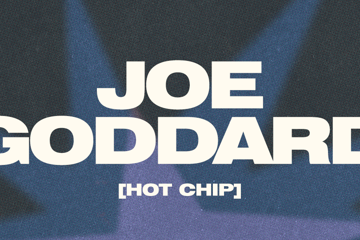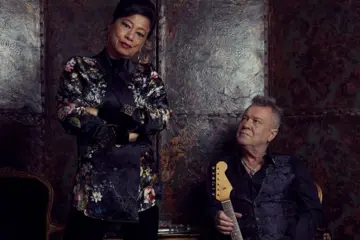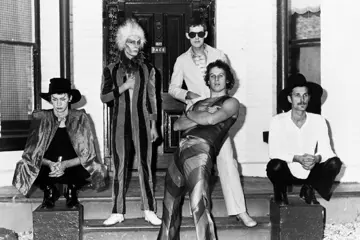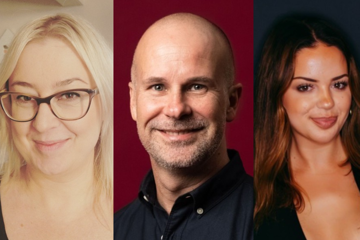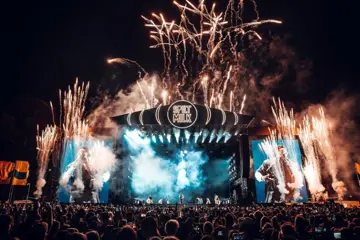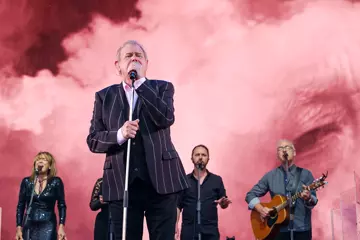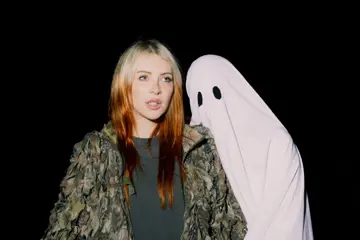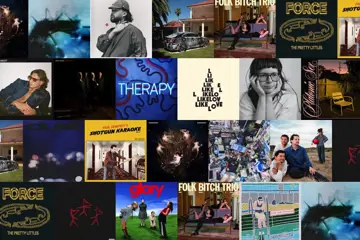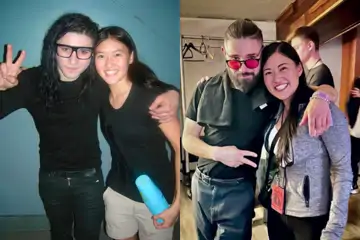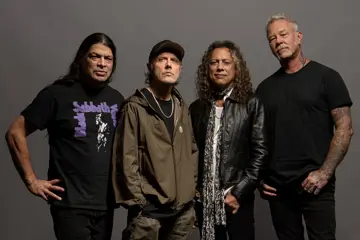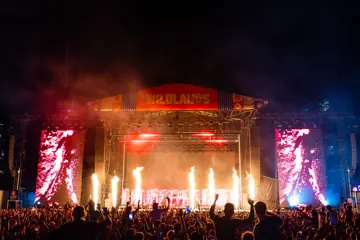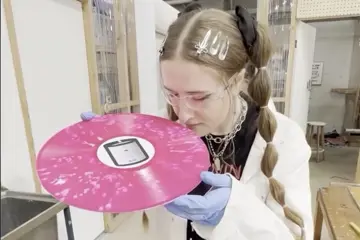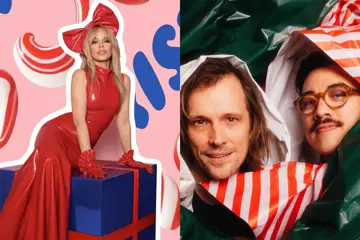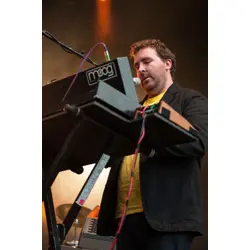 Joe Goddard
Joe GoddardYou'll probably recognise Joe Goddard from his collaborative musical projects such as Hot Chip, The 2 Bears and About Group (to name just a couple). On his second solo record Electric Lines (the follow-up to 2009's Harvest Festival), Goddard somehow references all of his musical identities while taking the listener on a magic mystery tour through the history of clubland. And, to this pair of ears, Electric Lines is a personal best from his complete discography.
"I naturally like to make a kind of eclectic mix of music," Goddard explains of how Electric Lines came together. "When I go into the studio each day I want to do things in a different tempo, and different style, and kind of just have a go at different things — I just enjoy that."
When told this scribe was reminded of discovering, and becoming obsessed with, various styles of dance music through the decades while listening to Electric Lines (on repeat), Goddard offers, "It's the same for me, it's just kind of going back through a lot of the different things that I've loved over the years and just trying to bring that all in together into a record. So, you know, I'm obsessed with hip hop and with disco and with garage and with house music, and so I wanted to represent all of that stuff."
A track called Home, featuring vocalist Daniel Wilson, is one of the album's highlights. When asked how he discovered Wilson's talent, Goddard enlightens, "He just expressed an interest in working with me in some capacity, whether it was for his record, or for me, or for whatever. And he was spending some time in London recording with various producers, and so I sent over the instrumental of that track and just said, 'How about we work on this?'
Don't miss a beat with our FREE daily newsletter
"So I listened to some of his previous music and I got the impression that, y'know, coming from Michigan — I think he comes from a small town outside of Detroit and I think you can hear some of that kind of brilliant, soulful, gospel feeling in his voice that you get in a lot of Detroit music, and the wonderful musical history of soul and everything. So I thought this track would be a good fit for him and so I just sent it over and it just kind of worked out in a really straightforward and lovely way. He came down to my basement studio one afternoon and hadn't really prepared all of the words. He had some ideas for words and we kind of recorded that and developed it and wrote some stuff together and talked through the meaning of it. And he's just a really, really sweet guy - a lovely, gentle kind of soul. I'm really so pleased with how that turned out.
"For a guy that'd, like, grown up on rock music and hip hop, and, y'know, Nirvana and Smashing Pumpkins and The Beatles and stuff like that - I think when you get these kind of noisy drum'n'bass tracks, they have some kind of similarity to rock'n'roll."
"For me, it references kind of quite classic, older house music like Joe Smooth, Promise Land or things like that, you know, that have this lovely gospel spirituality and the whole concept of kind of coming home is quite a gospel thing already... It just works."
It sounds like Goddard is well educated in dance music history and he allows, "I've read some great books." When asked for some recommendations, Goddard offers, "That guy Tim Lawrence who's recently brought out a book about New York club history [Life & Death On The New York Dance Floor, 1980 - 1983]. There are numerous ones that I've read over the years that have made a big impact on me, like Energy Flash, the Simon Reynolds book about dance music, is something I read when I was at university and I really, really, really love... I'm into any of those things. I love seeing the kind of development of dance music, from the first time a 4/4 beat was played by the drummer from Philadelphia International, maybe on like an MFSB or something like that. Or Harold Melvin & The Blue Notes, like, how that kind of turned into the beat that's just literally everywhere now in dance music and popular music. I just find that really fascinating."
Goddard admits he's "very, very happy" when he's working on music in his Shoreditch, London studio and he's particularly enamoured with his Eurorack synthesiser. "I've been into it for maybe, like, eight to ten years, something like that," he tells of when he first discovered the Eurorack. "The guys from Junior Boys - Jeremy Greenspan; we were on tour with them a long time ago - I think we were at Coachella festival actually, in California - and Jeremy took me onto their tour bus, and took me back through to the lounge at the back. And he'd hooked up his Eurorack to the VHS player so that he could play it out of the speakers in there, in the back lounge. And he was making all these great noises in there, and he was so excited about it and so into it. It was great. So that was how I was first introduced to it. And then I went to this amazing synth place in LA, I think it's called Analogue Haven, and I bought a big system there, and I've been kind of adding to it and working on it ever since, really. It's a really amazing thing - it's really creative, it's really good fun - and you feel like you're making new sounds that potentially no one's ever really made before."
We're curious to know which clubs Goddard frequented back in the day and he singles out "jungle, drum'n'bass clubs". "That was the big thing in London at the time," he continues. "For a guy that'd, like, grown up on rock music and hip hop, and, y'know, Nirvana and Smashing Pumpkins and The Beatles and stuff like that - I think when you get these kind of noisy drum'n'bass tracks, they have some kind of similarity to rock'n'roll; they sound a little bit like distorted rock records, some of them. So I think it's quite a natural kind of pathway into dance music. We used to try and get into The Blue Note and Metalheadz, or there was a night called Anokha, Talvin Singh's night at The Blue Note. And we wouldn't be allowed in every time because we were underage, but sometimes you'd get in, sometimes you wouldn't."
Goddard estimates he was around the age of 15 or 16 when he first started hitting the clubs. "Obviously that's a steep learning curve when you first gain entry to a club," he points out. "I didn't know anything about drug taking, really, at that point, so I was kind of wondering why everyone had so much energy at, like, three o'clock in the morning. And I was kind of falling asleep in front of the speakers sometimes. Like, I remember literally falling asleep standing up a couple of times, waiting for Squarepusher or Aphex Twin to come on at like four or five o'clock in the morning, and maybe just drinking a little bit, but not doing any drugs. And just not being able to keep my eyes open, but really wanting to stay and try and make it through the night to see those people," he laughs.
Goddard remembers that "there was a massive outcry" when The Shamen's Ebeneezer Goode dropped the "'Es are good" chorus lyrics. "I remember when I was at school, we were 13 or 14, something like that, and there were some people going around - I don't think many of my friends really knew what ecstasy was at that point, not fully. Maybe some of my friends' big brothers would tell stories about ecstasy or something and people would go 'round the playground, like, 'Do you think this song by The Shamen is actually about drugs?!' And I don't think I believed it at the time; I thought they were actually singing about someone called Ebeneezer Goode!" he laughs. "It certainly took me a long time to work out what it was about! It was a big, rebellious thing."
While we're discussing this era, we've just gotta know whether Goddard has any intel on that rumoured comeback by The KLF. He chuckles, "There's talk of stuff, yeah. I find [The KLF] really fascinating as well. I've read, like, several books about their career and I find them super interesting. Bill Drummond is a really mad kind of genius character. I think maybe there's a book and maybe some kind of performances this summer in London. But it's still, you know, they're typically - it's quite mysterious at the moment."
On The KLF's bizarre stunts, Goddard marvels, "They burned a million pound!... They flew a lot of journalists out to this remote island and had this kind of weird, druidic ceremony that they'd planned for ages; must have spent a lot of money. I think it was separate to when they burned a million quid but, yeah! They totally did it! And there was also another story of them playing at the Brit Awards... and Bill Drummond had an actual machine gun on stage firing blanks into the audience. It's pretty crazy." After discussing how such a stunt would go down these days, Goddard concludes, "There's no way you could get away with it. It was kind of amazing what they did."

